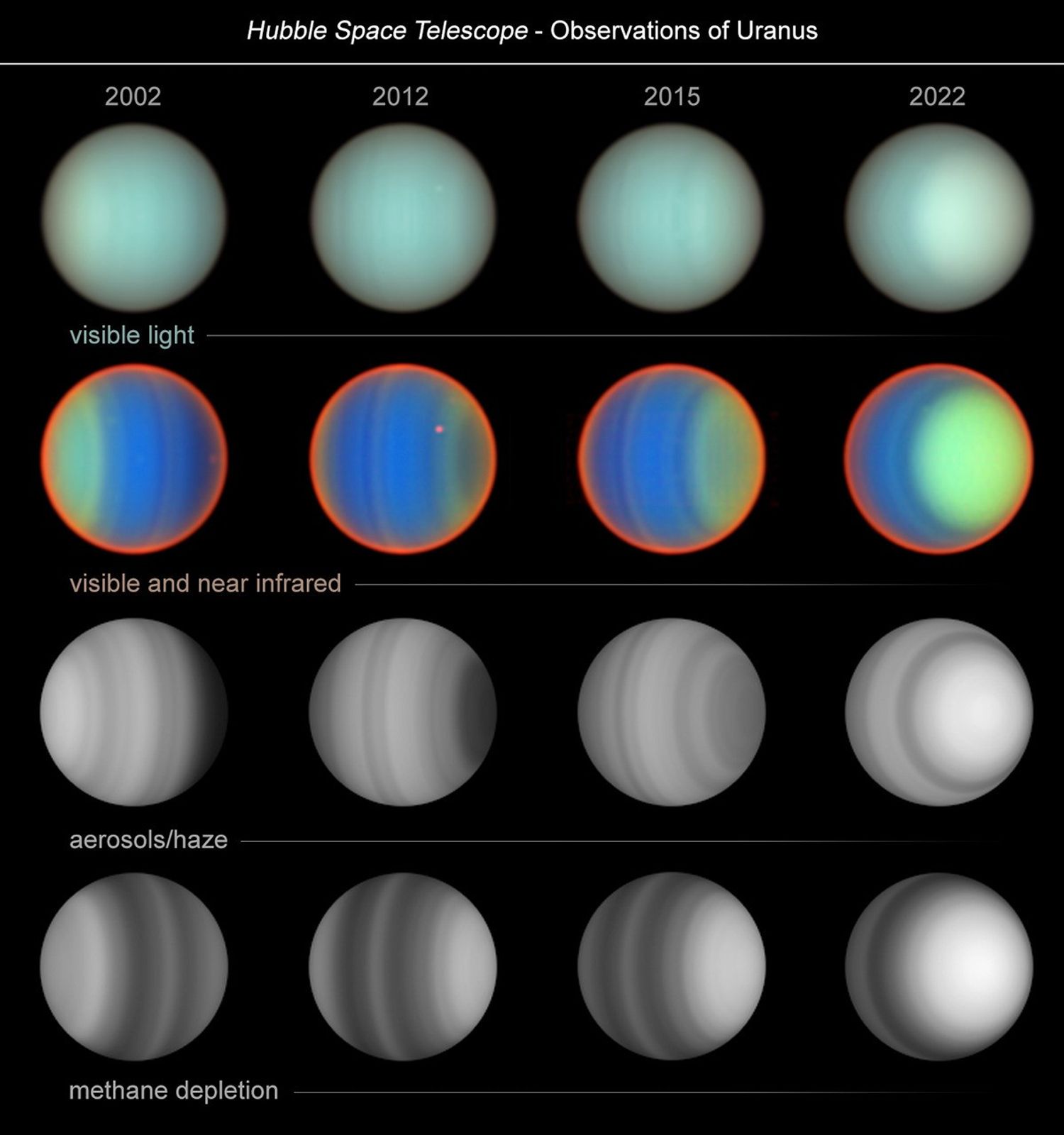
20 Years of Uranus Observations
The image columns show the change of Uranus for the four years that STIS observed Uranus across a 20-year period. Over that span of time, the researchers watched the seasons of Uranus as the south polar region darkened going into winter shadow while the north polar region brightened as northern summer approaches.
- X
https://science.nasa.gov/image-detail/amf-00fa3cf3-b78f-4254-800b-5294c38c9d65/
Size1500x1600px



























